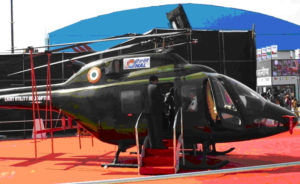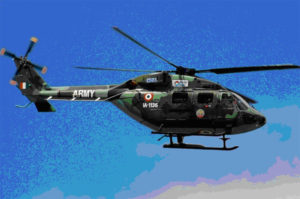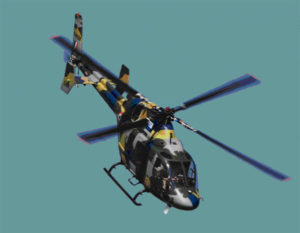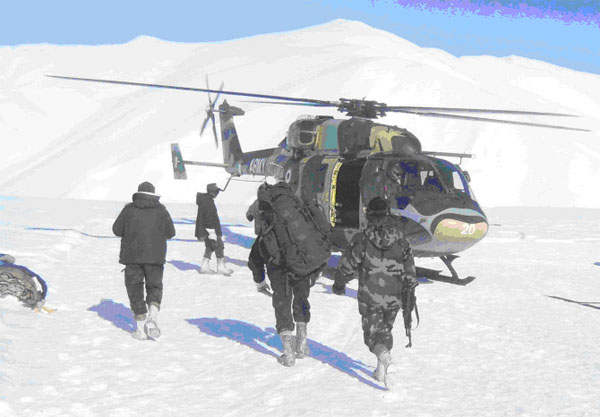HAL Chopper Is Now Siachen Ready
December 12, 2018
Dhruv and LUH helicopters must supply provisions to, and evacuate casualties from Siachen Glacier posts like Sonam, which, at 20,997 feet, is the highest inhabited spot on the planet. Photo courtesy Hindustan Aeronautics Limited
Hindustan Aeronautics has displayed its proficiency in the demanding field of helicopter design by successfully testing its indigenously developed light utility helicopter (LUH) to an altitude of 6 km (almost 20,000 feet).
In an organisation where engineers and technicians still smart over Defence Minister Nirmala Sitharaman’s recent statement that HAL was not competent to manufacture the Rafale fighter under licence, there is quiet vindication.
HAL stated on Monday, December 10, that breaking the 6-km barrier was ‘a critical requirement towards the certification of LUH… With the completion of this milestone, LUH can now undertake high altitude, cold weather trials planned in January 2019.’
This will involve operating the LUH in winter from helipads on the Saltoro Ridge that towers above the Siachen Glacier.
Currently, with the decades-old Chetak and Cheetah fleets nearly obsolete, HAL’s twin-engine Dhruv advanced light helicopter services the Indian Army’s Himalayan posts. Once the LUH is certified for operations, it will take on many of these tasks.
 The HAL Light Utility Helicopter. Photo courtesy Wikimedia Commons
The HAL Light Utility Helicopter. Photo courtesy Wikimedia Commons
Both the Dhruv and LUH are designed to operate at altitudes up to 6.5 km (21,325 feet), a capability that few helicopters have.
While selecting a VVIP chopper, the government brought down the altitude requirement to 4.5 km because there was just one chopper that could fly up to even 6 km.
Yet, this altitude requirement is essential for the Dhruv and LUH which must supply provisions to, and evacuate casualties from Siachen Glacier posts like Sonam, which, at 20,997 feet, is the highest inhabited spot on the planet.
HAL’s Chief Test Pilot, Wing Commander Unni Pillai (retd), who made the first Dhruv landing on Sonam, also piloted the LUH during its 6 km altitude test along with Wing Commander Anil Bhambhani (retd).
Powering this impressive performance is the Shakti engine, custom-designed by French engine-maker Turbomeca (now Safran) in partnership with HAL.
The Shakti, which is now built in India by HAL-Safran, powers a successful family of HAL-built helicopters: The Dhruv ALH, the LUH, an armed Dhruv variant called Rudra, and the light combat helicopter (LCH), which is close to being accepted into service.
Unlike the Dhruv, Rudra, and LCH — all of them large, 5-tonne helicopters powered by twin-Shakti engines — a single Shakti engine powers the 3-tonne LUH. Safran markets this engine as the Ardiden 1U, while HAL calls the Shakti 1U.
With the army in dire need of 394 light helicopters, the defence ministry decided to meet that requirement through two procurements.
To meet immediate requirements, 197 light helicopters would be procured from the international market. Meanwhile, HAL would develop and manufacture 187 indigenous light choppers.
 The Dhruv helicopter. Photo courtesy Noel Reynolds/Wikimedia Commons
The Dhruv helicopter. Photo courtesy Noel Reynolds/Wikimedia Commons
In making the overseas procurement, the National Democratic Alliance government decided against a global tender, instead signing an intergovernmental agreement with Russia for building the Kamov-226T helicopter in India, in a joint venture with HAL.
With that contract still to be signed, the rapid pace of the LUH development gives the government the option to dispense with international procurement and build an all-Indian fleet instead.
An ambitious HAL is looking beyond purely military orders at the civil and export markets as well. ‘The LUH is being indigenously developed by HAL to meet the requirements of both military and civil operators,’ announced the company.
Even so, for now, the priority is the military. ‘HAL has an in-principle order for 187 LUH that includes 126 for the Indian Army and 61 for the Indian Air Force,’ HAL stated on Monday.
 Photo courtesy Hindustan Aeronautics Limited
Photo courtesy Hindustan Aeronautics Limited
According to HAL, the LUH ‘will be capable of flying at 220 km per hour, with a service ceiling of 6.5 km and a range of 350 km with a 400 kilo payload… The helicopter, with a glass cockpit, can be deployed for reconnaissance and surveillance roles and as a light transport helicopter.’
The LUH is currently being tested with two prototypes. The first flight took place on September 6, 2016 while the second prototype flew on May 22, 2017. A third prototype is currently being built.
Courtesy: Rediff

